پارهلیا یک شبیهسازی آبوهواییه در مقیاس یک اینستالیشن نمایشگاهیه. با اون که طراح به هیچ وجه به سمت واقعگرایی و بازنمودهای عینی پیش نرفته و حتی نگرفته فضا رو یک دست و مثلا به شکل داخل یک کره بسازه و درزها و اتصالات و هندسه رو مخفی کنه، اما به شدت خوب از کار دراومده و تونسته به بیانی انتزاعی و تاثیرگذار از اون پدیده دست پیدا کنه.
پدیدهی ice halo وقتی به وجود میآد که در هوا ذرات بخار آب به حدی زیاد باشن که روی شعاع نور خورشید اثر بگذارن و غالبا در آب و هوای یخبندان ترازهای شمالی زمین رخ میده. آصف خان با شبیه سازی ذرات کریستالی بخار آب در هوا به صورت دیوارهایی متشکل از کریستالهای ریز و با استفاده از نور یک لامپ LED به جای نور خورشید موفق شده این پدیده رو به چشم مخاطبهایی در ترازهای پایین زمین و حتی در دل تابستون هم بیاره :)
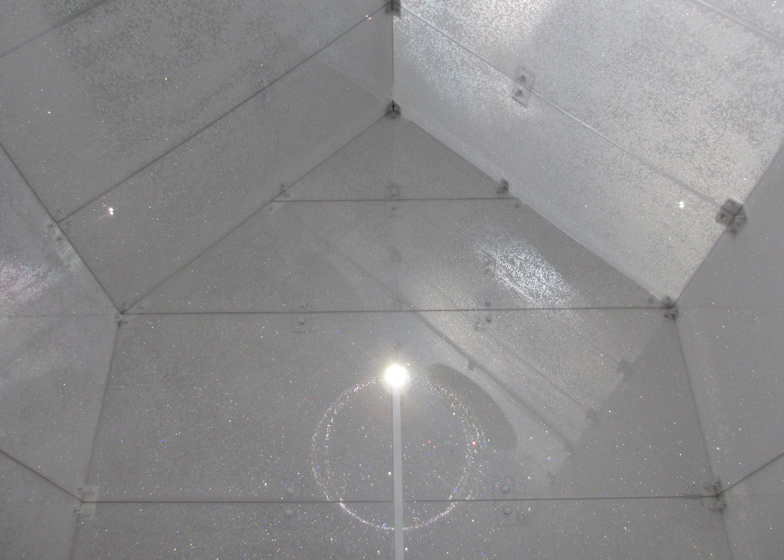
Design Miami: London designer Asif Khan used Swarovski crystals to recreate an ice halo – an atmospheric effect most often seen in freezing northern climates – in this installation in the sub-tropical heat of Miami.
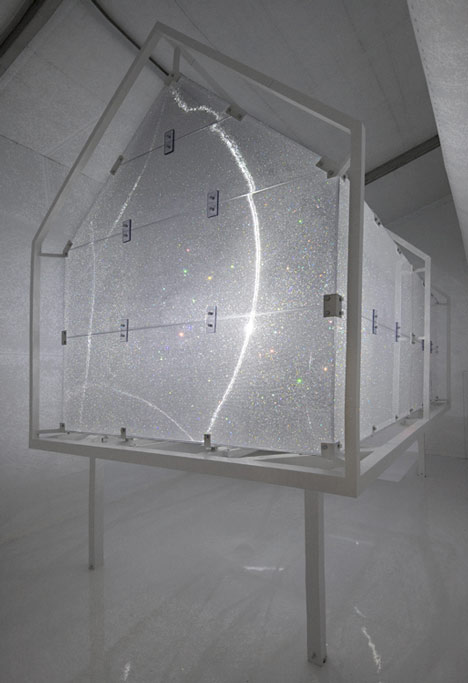
Above: photograph by Steve Benisty shows Parhelia at night
Asif Khan designed the artificial Parhelia, which means “beside the sun”, as a house-shaped structure with honeycomb walls filled by over a million Swarovskicrystals.
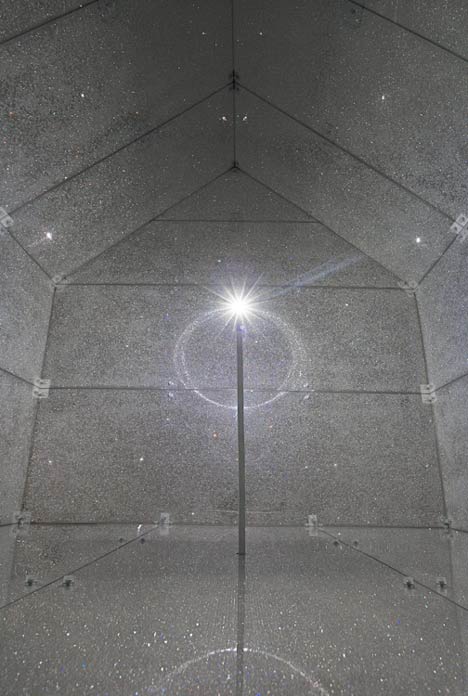
Above: photograph by Steve Benisty shows Parhelia at night
Real ice halos appear when billions of ice crystals, each only 0.1 millimetres in size, are suspended in the air at low temperatures. The crystals then refract and reflect light from the sun to produce geometric shapes such as arcs and halos.
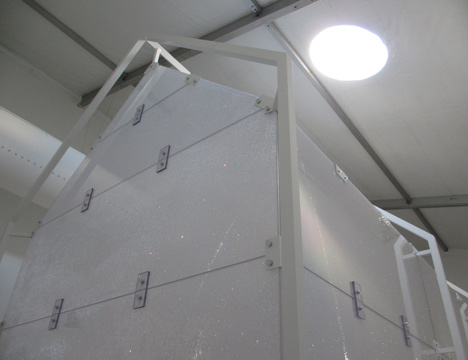
“Having not had the chance to go to the north of Norway to see one, I had to try and recreate it,” Khan told Dezeen at Design Miami, explaining that he created a real ice halo in a laboratory at the University of Manchester as part of his research.
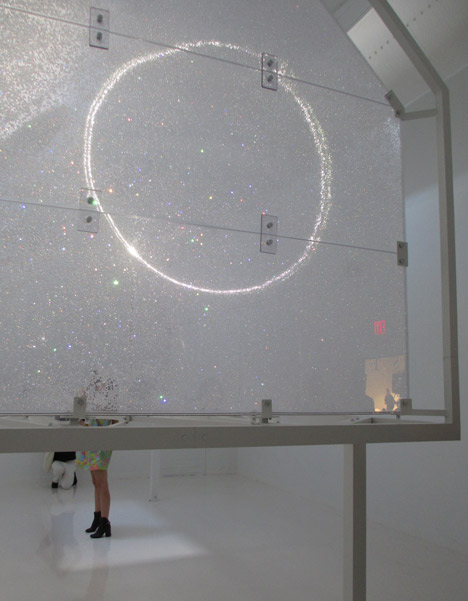
In Parhelia, light from a single LED bulb inside the structure interacts with the geometry of the crystals to create a halo effect, which appears to move and change in size as you walk around the space.
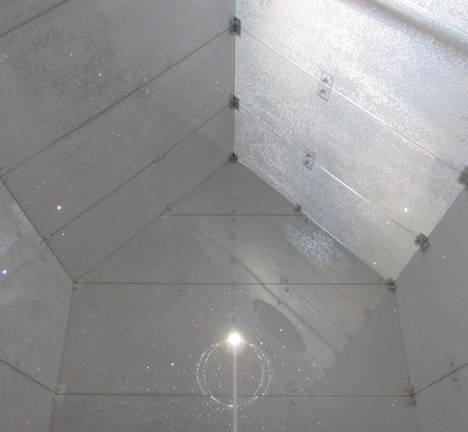
The walls contain both clear crystals and “aurora borealis” crystals, which have a special coating to refract light differently. Some of the cells have been left empty to allow more light to pass through the space.
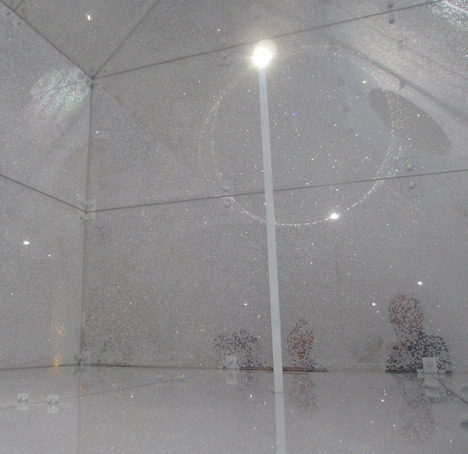
“From a technical level we had to figure out how to reproduce the kind of refraction and light amplification,” said Khan. ”On the other hand, from an emotional perspective, I really wanted this structure, or the piece of architecture we’re creating, to bring people closer to light.
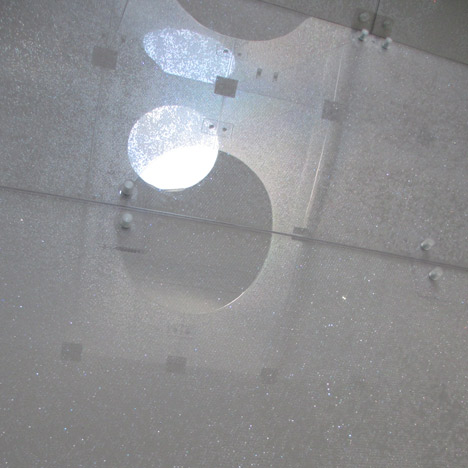
“There is a sort of intimate connection that we all have with the sun, even though it’s a million miles away,” he continued. “So I thought if our work could bring people closer to light, make light tangible, make the experience of light something intimate, that it’s kind of disarming in a way. So the relationship between a person and the piece of architecture becomes a kind of emotional one, and the light is a conduit to make that happen, a tool to make that happen.”
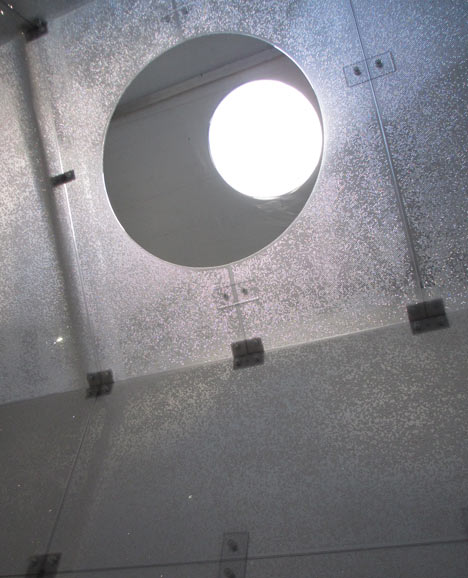
Visitors can crouch underneath the raised structure and pop up inside to see the LED light source. Khan also persuaded Design Miami to cut a hole in the roof of the tent to bring more light into the space.
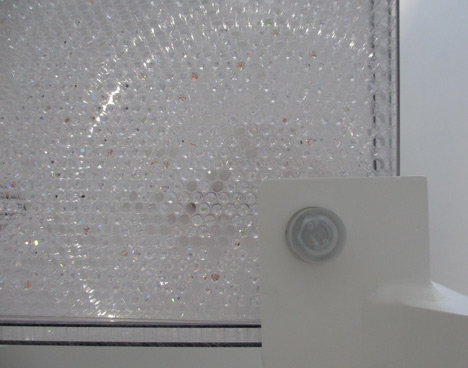
“This stooping and popping up somehow disarms you and it makes you feel for some reason quite happy,” he explained. “As you go in, you look up and you see the clouds passing above you – it’s completely unexpected, the rest of the fair is completely dark – and you see a single light source inside.”
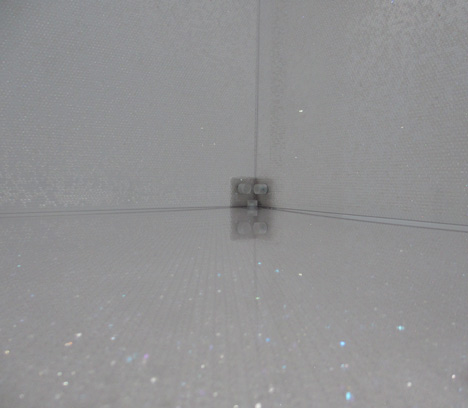
The installation takes on a different character at night, added Khan. “At night it’s crazy, it’s so bright. It becomes more about staring at the halo, as opposed to absorbing the room and the Miami sun.”





















